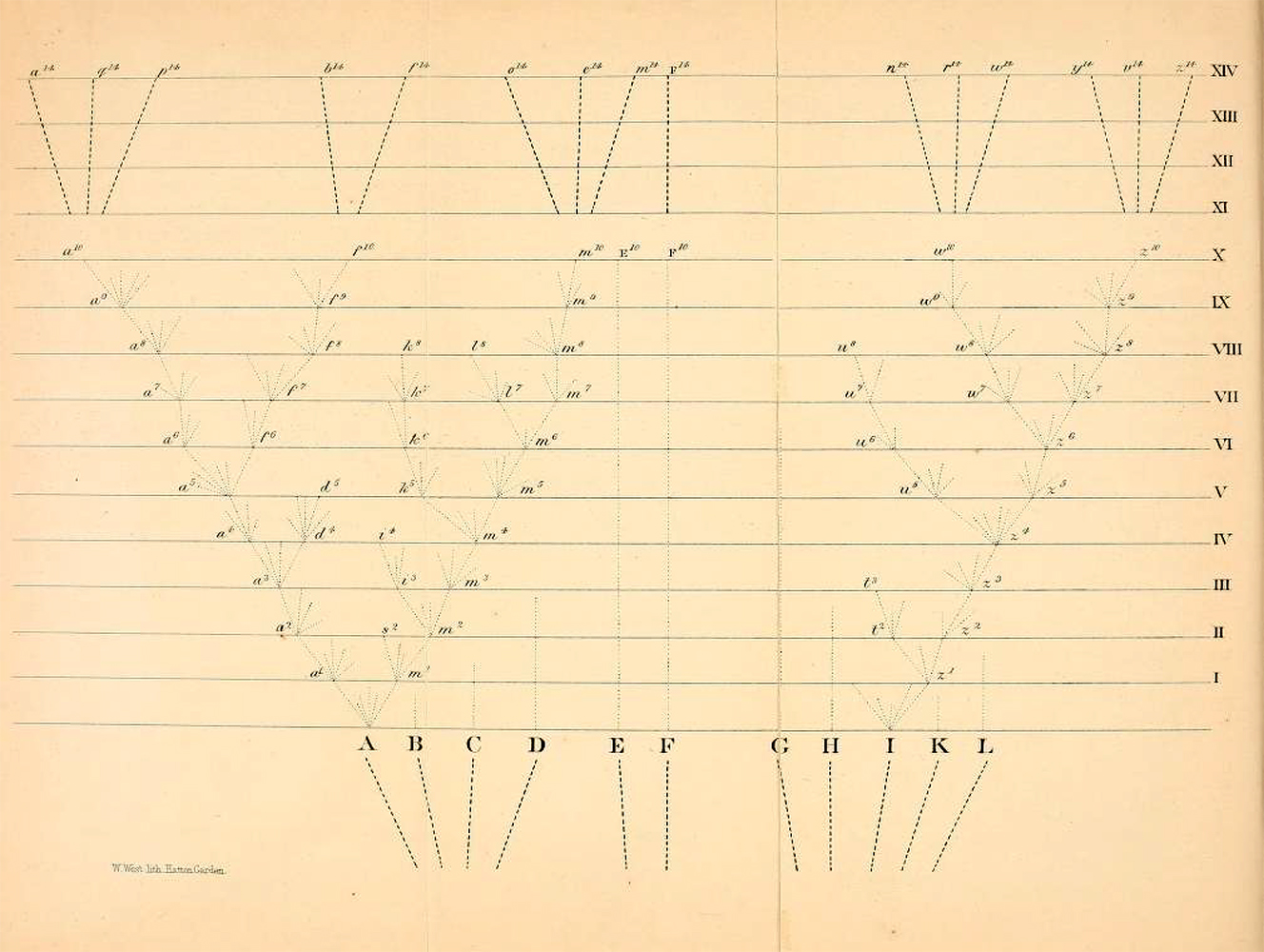In a later account of how he had come to the evolutionary ideas published in Origin, Darwin wrote: 'Of all the minor points, the last which I appreciated was the importance & cause of the principle of Divergence' (to Ernst Haeckel, [after 10] August - 8 October [1864]).
Darwin set out to explain how intermediate forms in any species or genera tend to die out and leave the extreme forms to survive and pass on their characteristics. This 'principle of divergence' - or as he described it 'the tendency to the preservation from extinction of the most different members of each group' - was prompted by the observation that any given habitat supports more life if it is occupied by many different life-forms. Overall agricultural yields, for example, were much higher where a variety of crops were grown together. Darwin realised that varied offspring could colonise a wider range of habitats than the parent organism; competition would be fiercest for the middle ground where all forms could thrive, while those at opposite ends of any spectrum could more easily co-exist. The intermediate forms were therefore more likely to struggle to the point where they became extinct, while the extreme forms flourished and might eventually become established as new species. Darwin saw these processes as the origin of the branching relationships between species, genera, families, orders, and classes.
Darwin first mentioned the principle by name in a letter to Joseph Hooker in August 1857, but didn't explain what he meant. Shortly afterwards, in September 1857, he included a brief outline of the principle in a letter to Asa Gray where he set out the state of his thinking on evolution:
One other principle, which may be called the principle of divergence plays, I believe, an important part in the origin of species. The same spot will support more life if occupied by very diverse forms: we see this in the many generic forms in a square yard of turf (I have counted 20 species belonging to 18 genera),-or in the plants and insects, on any little uniform islet, belonging almost to as many genera and families as to species. . . . the varying offspring of each species will try (only few will succeed) to seize on as many and as diverse places in the economy of nature, as possible. Each new variety or species, when formed will generally take the places of and so exterminate its less well-fitted parent. This, I believe, to be the origin of the classification or arrangement of all organic beings at all times. These always seem to branch and sub-branch like a tree from a common trunk; the flourishing twigs destroying the less vigorous...
He described its operation in great detail in Origin (pp.111-126), and it is explained figuratively in the only diagram included in the book. Before embarking on Origin, he had already partially written it up, and had described it to Hooker in June 1858 as being, together with the mechanism of natural selection, 'the key-stone' of the much longer book he had intended to call 'Natural selection' but which he never finished (see Natural selection, pp. 227-50).
Darwin's correspondence suggests that he was already beginning to think along these broad lines as early as 1844, and was certainly investigating the numbers and diversity of species inhabiting the same area by 1846. For a full definition of the principle of divergence and the background to Darwin's final formulation of it between November 1854 and 1858, see Browne 1980, Ospovat 1981, pp. 170-209, and Kohn 1985.




